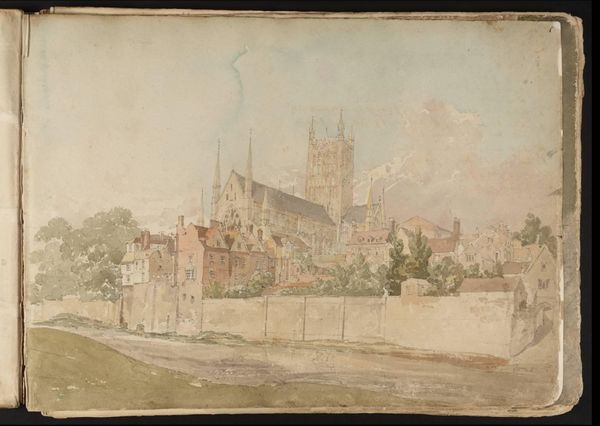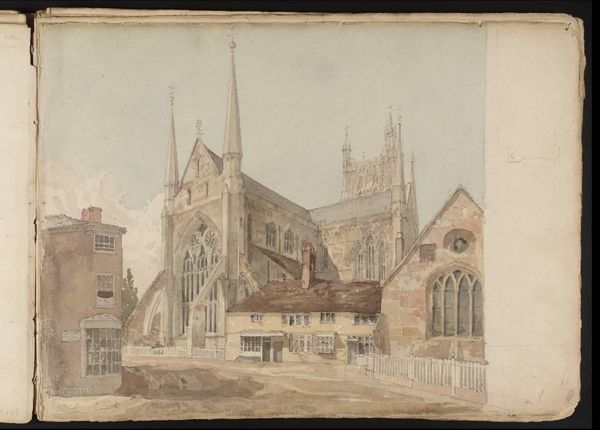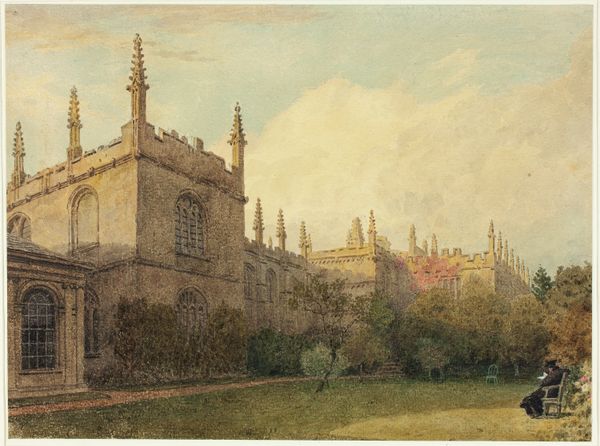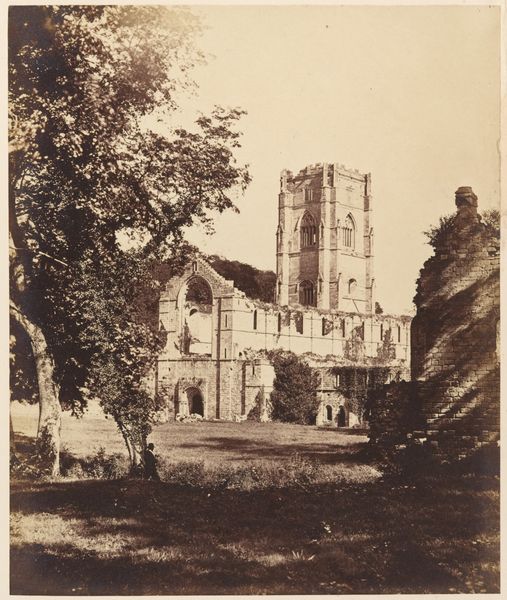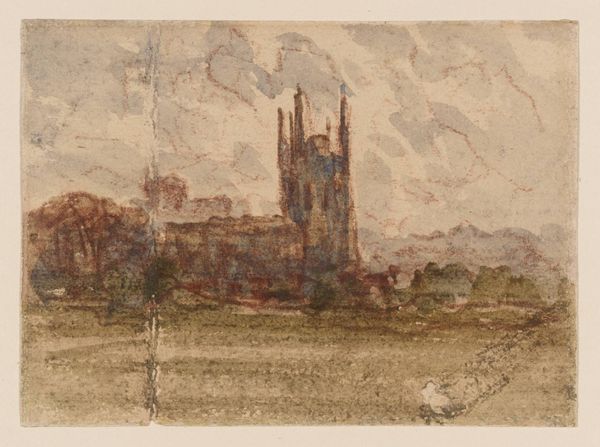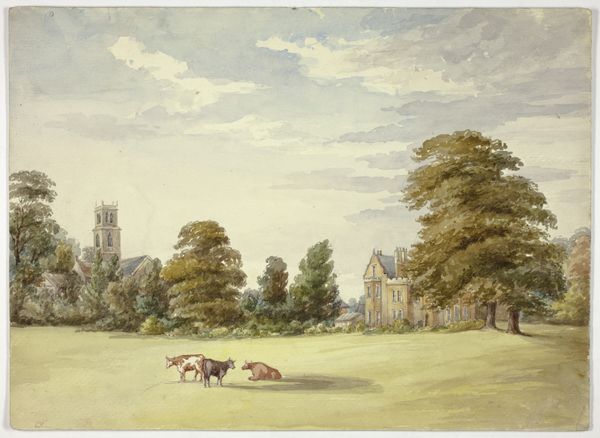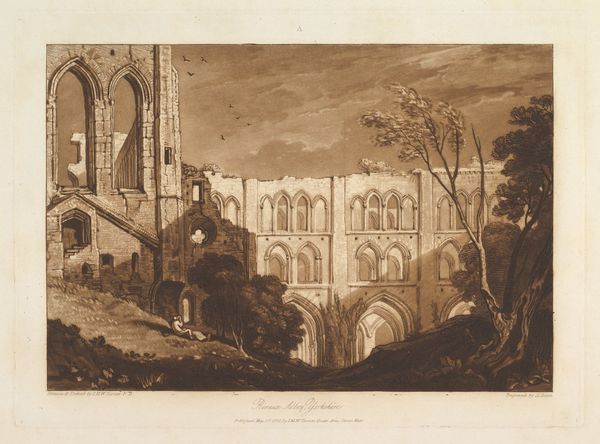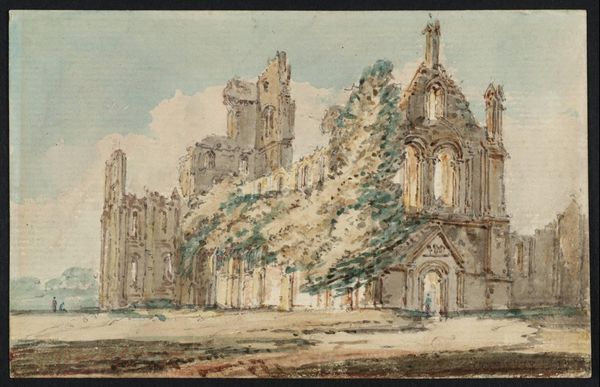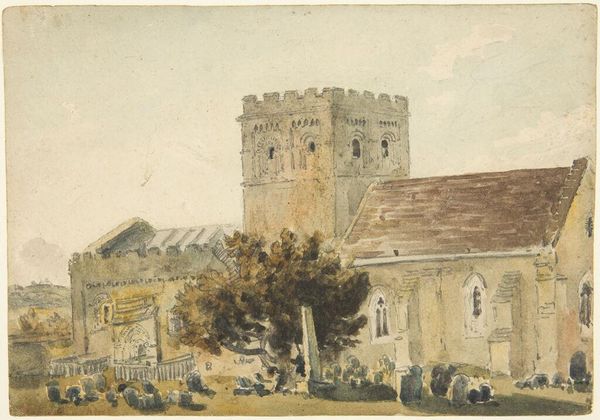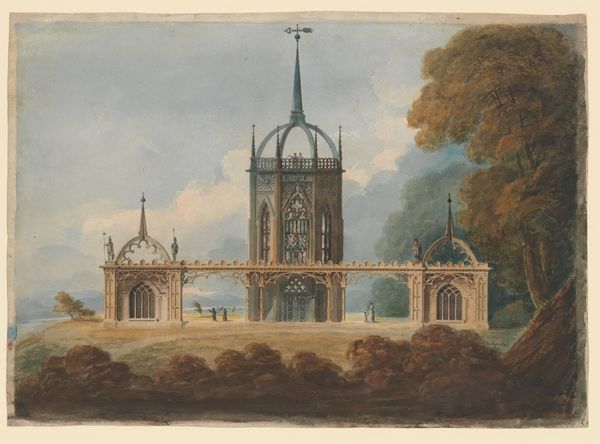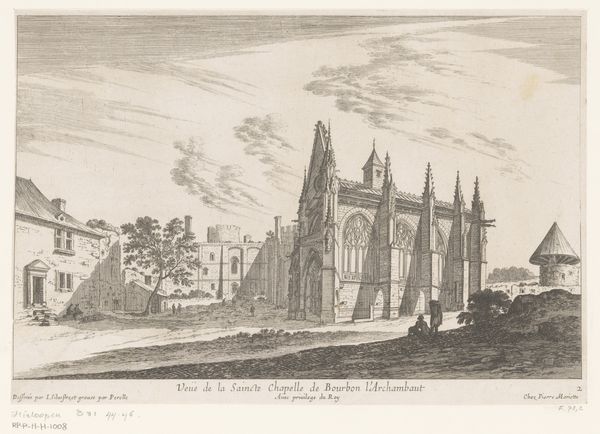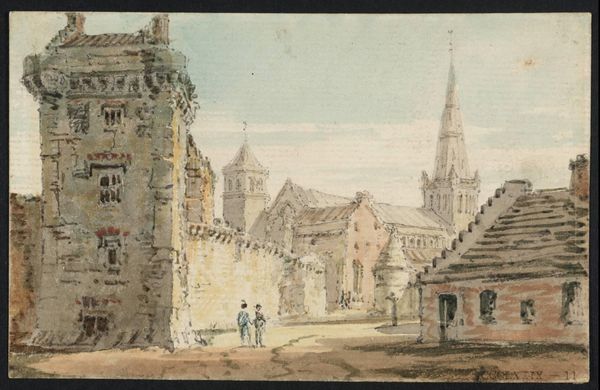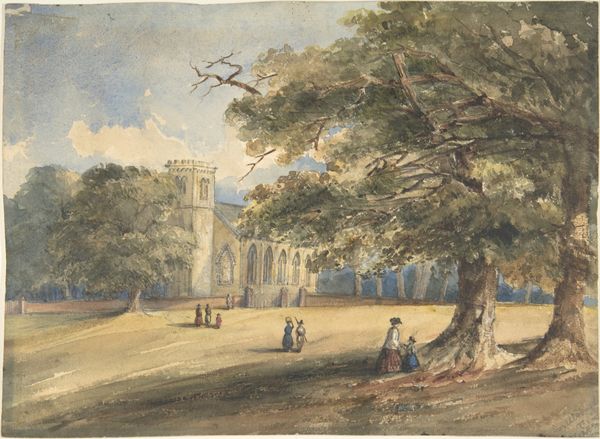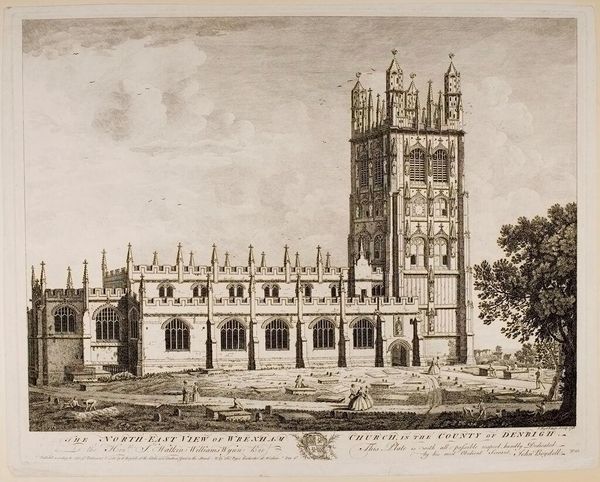
Dimensions: 230 × 310 mm
Copyright: Public Domain
Editor: This is "Magdalen College and Tower, Oxford," a watercolor on paper completed in 1853 by George Pyne. It feels almost like a postcard from a time long ago, doesn't it? What strikes me is how detailed and picturesque it is. How do you see this work in the context of its time? Curator: It's indeed picturesque, isn't it? Considering the social context, this piece speaks volumes about the rising interest in historic preservation and national identity during the Victorian era. Oxford, as a symbol of tradition and knowledge, became a popular subject. Watercolors like these were often commissioned by the educated elite as souvenirs, reinforcing their connection to institutions of power and learning. The artwork’s emphasis on architectural detail romanticizes the institution, glossing over any socio-economic disparities it may have represented. What purpose do you think those details serve for the viewer? Editor: I guess it’s a way to almost claim a piece of that history and prestige. Do you think the artist had any political intentions in creating this image, or was it purely aesthetic? Curator: It's hard to say definitively. Artists at this time were increasingly aware of their role in shaping public perception. The choice to depict Magdalen College in such a positive light, consciously or unconsciously, reinforces a specific narrative of British heritage and scholarly excellence. The figures within the frame are carefully placed and arranged, emphasizing the scale of the institution itself and perhaps minimizing the individual narratives within it. How might different social classes have interpreted such a representation? Editor: That’s a really interesting point; the uncritical, somewhat idealized view of academia might seem out of reach, even alienating to some. Curator: Exactly! And that’s where the politics of imagery comes in – it isn’t just what’s shown, but what's intentionally left out, that shapes our understanding. Editor: I never thought of it that way, really dissecting the implications of seemingly ‘neutral’ art. It definitely adds another layer to appreciating the work. Curator: Precisely. Understanding the historical forces that shape art allows us to critically engage with the visual narratives presented to us, then and now.
Comments
No comments
Be the first to comment and join the conversation on the ultimate creative platform.
